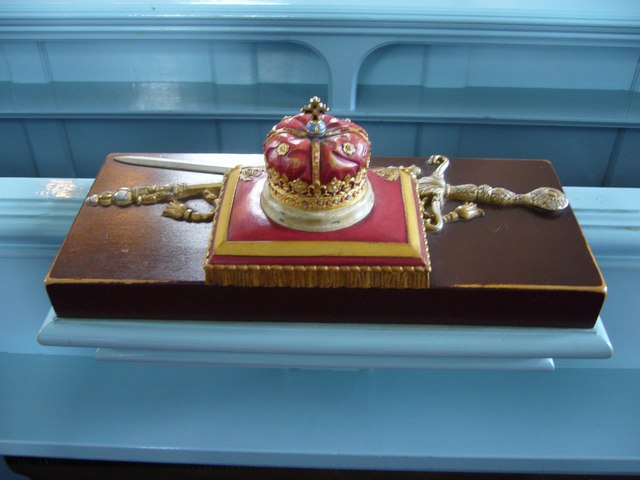The Crown of Scotland, a sceptre and the Sword of State make up the Honours of Scotland and they are the oldest regalia items in the British Isles.
The Sword of State dates back to 1507. It was a gift from Pope Julius II to King James IV. It was in honour of James’s defence of Christianity. A Sword of State symbolises the monarch’s power to use the state against its enemies and the duty to keep the peace.
Scotland’s Sword of State was made by the Italian artist, Domenico da Sutri. It measures five feet in length and replaced a previous Scottish made Sword of State that was lost.
The highly decorated blade is 3.25 feet long and is decorated with images of Saint Paul and Saint Peter. Inlaid with gold lettering are the words: “JULIUS II PONT MAX” which translates to “Julius II Supreme Pontiff.” The blade is extremely fragile and was broken in two, probably when it was being hidden from Oliver Cromwell in the 1600’s. It has since been repaired, but the break is obvious.
The silver-gilt handle is full of symbolism. It is adorned with oak trees and acorns to represent the Risen Christ. The church is represented through images of dolphins and form the crossguard on the sword.

The scabbard for the Sword of State is wooden, wrapped in red velvet and decorated with silver gilt. The arms of Pope Julius II and papal symbols are part of the decorations, along with oak leaves, acorns, dolphins and masks.
The belt is woven silk and gold thread. Fastened with a silver-gilt buckle, the belt also has the arms of Pope Julius II as part of its design.
The Honours of Scotland will be presented to King Charles III. The last monarch to be crowed with them in a coronation ceremony was King Charles II in 1651.
Today, they are on display, along with the Stone of Scone at Edinburgh Castle in Scotland. They are also part of ceremonial royal events in Scotland.

